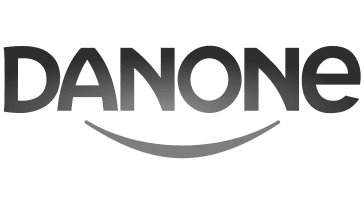A journey from data breach to robust security
Our client, a financial services company, suffered a major data breach, which resulted in significant downtime and loss of customer trust. They needed a managed services provider with strong cybersecurity expertise to prevent future incidents and improve their overall security posture. The client approached Link Group with their cybersecurity concerns and sought our help in addressing their vulnerabilities.
They had implemented a robust security infrastructure, including 24/7 monitoring and threat intelligence systems. One day, their SIEM system detected an unusual spike in outbound network traffic from an internal server. The security operations center (SOC) team was alerted and immediately began investigating the incident.
Upon further analysis, the SOC team discovered that the traffic spike was caused by a previously unknown malware variant attempting to exfiltrate sensitive data from the organization’s network.
“The malware had gained access to the server through a spear phishing attack targeting a high-ranking employee with a seemingly legitimate email.”
Łukasz Urbaniak

Turning crisis into opportunity
Thanks to the proactive detection and rapid response of our SOC team, the malware was quickly contained and neutralized before it could exfiltrate any sensitive data or cause further damage to the organization’s systems. The incident response team then performed a thorough analysis of the affected systems to ensure that all traces of the malware had been successfully removed and that no additional vulnerabilities or backdoors were present.
As a result of this incident, the organization initiated a comprehensive review of its cybersecurity practices, including employee security awareness training and the implementation of additional security controls to prevent similar incidents in the future. The outcome demonstrated the value of proactive threat detection and response in protecting an organization’s assets and reputation, as well as the importance of continuous improvement and adaptation in cybersecurity.
Cybersecurity reinvention: Post-incident practices
To begin, a comprehensive security assessment was conducted to identify vulnerabilities in the client's network and systems. The client's IT infrastructure was thoroughly analyzed by our team of experts, which involved examining the systems, policies, and procedures in place.
Afterward, a risk assessment was conducted to identify threats and vulnerabilities, evaluate their potential impact, and prioritize remediation efforts. Decisions were made based on a set of best practices, FinTech regulatory requirements, and the client's unique needs. A detailed report was provided to the client, which highlighted areas of concern and recommended steps to address them.
Next, robust security measures were implemented, including the deployment of firewalls, intrusion detection systems, and multi-factor authentication. The client worked closely with our team to customize the security measures to suit their specific needs. Additionally, 24/7 security monitoring and threat intelligence were provided to proactively detect and respond to potential threats.

Steps to cybersecurity excellence
Our approach was systematic and thorough involving the following steps:
Kick-off meeting
We initiated the project with a kick-off meeting, where we discussed the client’s goals and objectives. We also gathered information about their network infrastructure, systems, and applications, which helped us understand the scope of the project.
Network mapping
Our team performed network mapping to develop a clear understanding of the client’s network topology, including the location and configuration of devices, servers, and other network components. This allowed us to identify potential entry points and weak spots in the network.
Vulnerability scanning
We used automated vulnerability scanners like NNessus, OpenVAS, and Qualys to scan the client’s network and systems for known security flaws, misconfiguration, and outdated software. We carefully analyzed the results and verified the identified vulnerabilities.
Penetration testing
To further validate and explore the identified vulnerabilities, we have conducted penetration testing. Our team of ethical hackers simulated a real attack, attempting to exploit the vulnerabilities and assess their potential impact on the client’s network and systems.
Manual review
We performed manual checks for vulnerabilities that were not easy to detect by automated tools. Our team examined network configurations, application logic, and tested for social engineering attacks to ensure a comprehensive assessment.
Risk assessment
After identifying the vulnerabilities, we assessed their severity and potential impact based on factors such as the likelihood of exploitation, potential damage if exploited, and ease of remediation
Reporting and remediation
We have prepared a detailed report, outlining the vulnerabilities discovered and their severity with recommended remediation steps. We have presented this report to the client in a meeting, discussing our findings and offering guidance on how to address the identified issues
Follow-up and support
Once the client accepted the plan after being provided with a report and recommendations, we maintained ongoing communication to support them during the remediation process. We also conducted follow-up assessments to ensure the vulnerabilities were properly addressed and no new vulnerabilities had emerged.
“Throughout the project, our team's proactive approach and commitment to open communication with the client ensured a successful identification and remediation of vulnerabilities in their network and systems”
Łukasz Urbaniak
Spotting and securing vulnerabilities
During a routine vulnerability scanning and manual review, we identified a critical vulnerability in one of our client's databases. The database was accessible without proper authentication, exposing sensitive data such as customer information and financial records to potential unauthorized access.
Our team promptly notified the client about the vulnerability and recommended implementing proper authentication measures such as secure credentials and IP whitelisting for approved access. The client acted quickly on our recommendations, and we verified that the database was no longer accessible without proper authentication.
This proactive detection and response helped prevent a potential data breach and safeguarded the client's sensitive information. Our swift actions, coupled with the client's prompt response, highlight the importance of continuous monitoring and proactive detection in maintaining a secure IT environment.

Ensuring effective communication
Since communication is key for any project, we have followed best practices for managing communication with clients throughout a project:
Clear communication channels
At the very beginning of the project, we identified and agreed upon the preferred communication channels, such as email, phone calls, video conferences, or instant messaging apps.
Clarified expectations
We discussed and clarified the communication frequency and response times right at the outset.
Regular updates and progress reports
We provided clients with regular updates on project progress, either through scheduled meetings, status reports, or email updates.
Open and transparent communication
Throughout the project, we worked on creating an environment where the client feels comfortable asking questions, providing feedback, and expressing concerns.
Being proactive
When any issues or delays arose, we communicated them to the client as soon as possible, along with potential solutions or adjustments to the project plan.
Scheduling milestone reviews
We planned periodic meetings or calls to review project milestones or deliverables.
Documenting all communication
We kept a record of all correspondence, meeting minutes, and decisions made throughout the project.
From breach to breakthrough
Since partnering with Link Group, our client has experienced no major security incidents. Our proactive approach to cybersecurity has helped them to improve their overall security posture and regulatory compliance.
Our 24/7 security monitoring and threat intelligence has also reduced the response time to security incidents from hours to minutes. This has helped our client to enhance their customer trust and confidence in their security measures.

Learning from cybersecurity success
Throughout this project, our team gained valuable insights and experiences that have been applied to other projects, enhancing our approach to cybersecurity assessments and support. Some of the key lessons learned are as below:
Importance of tailored assessments
We have recognized that each client’s network and systems environment is unique, requiring a customized approach to vulnerability assessment and remediation. This project taught us the importance of adapting our methodologies and tools to suit the specific needs and context of each client.
Continuous communication
The success of this project reinforced the value of maintaining open and continuous communication with the client. By fostering a collaborative environment, we were able to address concerns promptly, receive feedback and ensure that the client remained informed and engaged throughout the process.
Proactive threat hunting
This project highlighted the benefits of proactive threat hunting as we were able to identify and address potential issues before they could be exploited by attackers. By integrating proactive threat hunting into our other projects, we can better anticipate and mitigate risks for our clients.
Comprehensive reporting
Through this project, we learned the importance of producing detailed and actionable reports that clearly outline the identified vulnerabilities, their severity, and recommended remediation steps. This has helped us improve our reporting practices and ensure that clients receive the information they need to make informed decisions about their cybersecurity.
Ongoing support
The project emphasized the value of providing ongoing support and follow-up assessments to clients, helping them maintain a strong security posture and adapt to change in their IT environment. This has become a key component of our cybersecurity service offerings, enabling us to build long-term relationships with our clients and contribute to their continued cybersecurity success.










.png)










